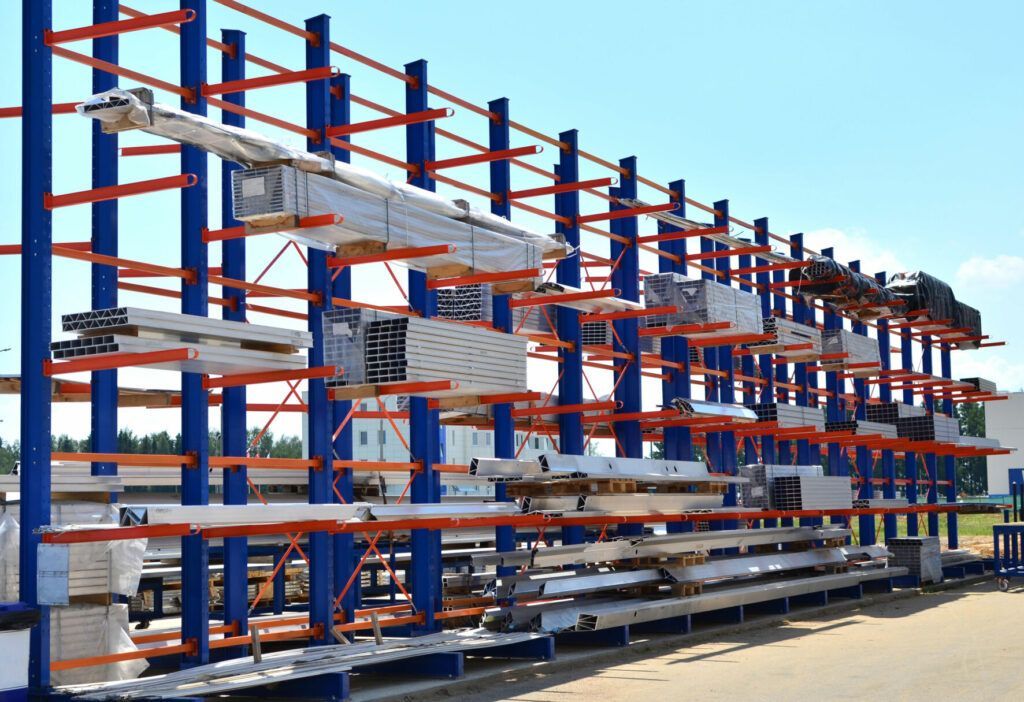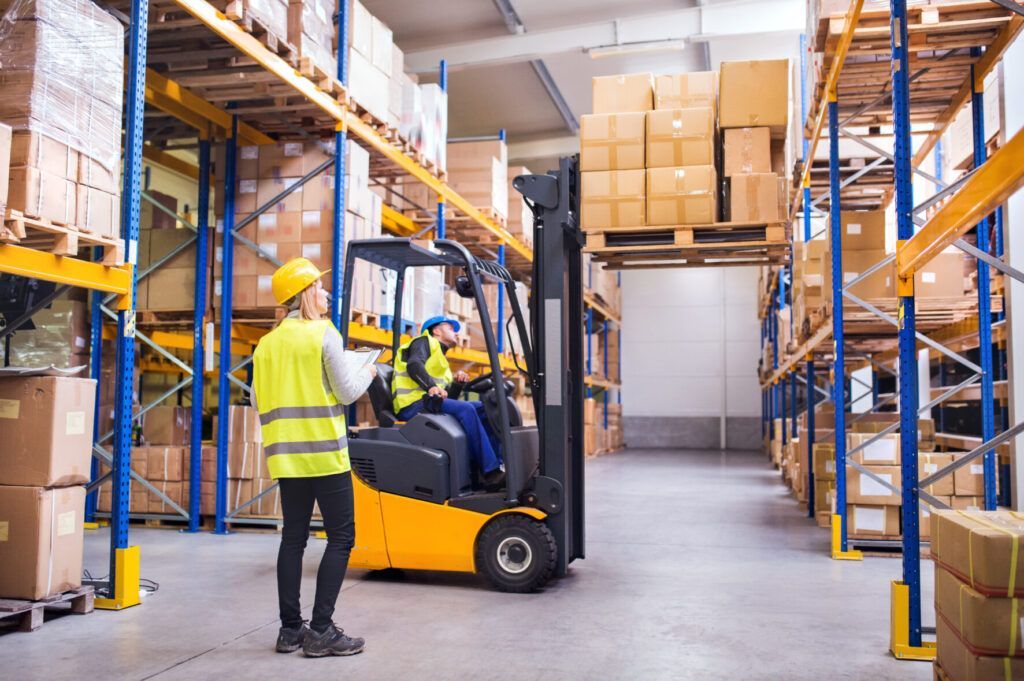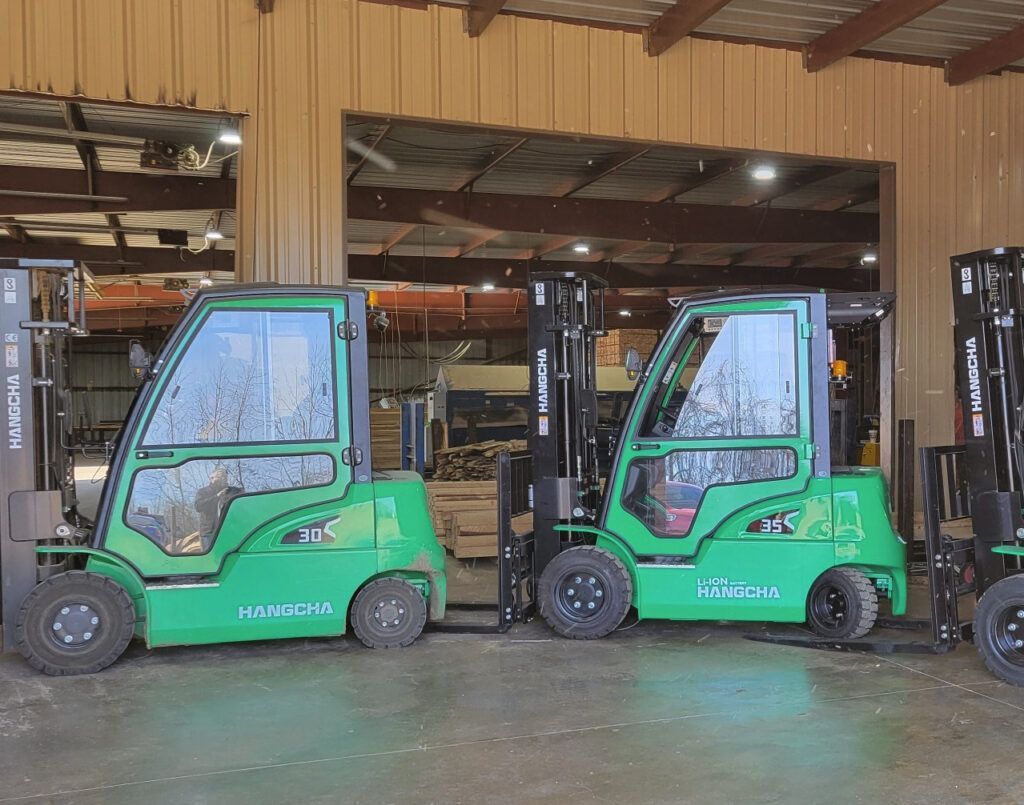How to Choose the Right Racking for Your Warehouse
An optimized warehouse is the foundation of a robust operation in the materials handling and retail industries. When you think about how to get the most out of your warehouse, forklift equipment and staffing come to mind first…but have you considered your shelving? An often underestimated yet valuable system, your warehouse’s racks and shelving setup contribute to the overall organization of your inventory and the safety of your employees.
Let’s examine several racking systems so you can determine which system is the best fit for your warehouse.
Cantilever Racking System
Cantilever racking systems excel in storing elongated units such as piping and lumber (ex. 2×4 storage at a home improvement store). Their open-arm design allows for easy accessibility and retrieval of individual items, making it ideal for pulling out materials one at a time. This system offers efficient use of space, particularly suitable for warehouses dealing with loose raw materials.
The cantilever system may be less space-efficient for smaller items or densely packed storage needs. The open structure could lead to less organized storage than enclosed systems, potentially posing challenges for inventory management.

Pick Style Racking System
The pick-style racking system is tailored for holding small, single units such as reams of paper or boxed parts (think of retrieving bolts at a hardware store). This shelving structure optimizes accessibility for individual item retrieval, facilitating efficient picking processes. It is an excellent choice for warehouses dealing with packaged materials that require a one-at-a-time picking approach.
On the downside, there may be more efficient systems for storing larger or irregularly shaped items. The emphasis on individual picking might result in less overall storage density than other systems, potentially impacting warehouse space utilization.
Push-Back Racking System
Push-back racking systems allow for maximum efficiency and space utilization. This system follows the Last In, First Out (LIFO) method of stocking inventory by condensing multiple single-bay aisles into one aisle, multiple bays deep. Ideal for mass amounts of identical units on identical pallets, it ensures quick access to recently stocked items while minimizing the overall space required.
Despite its efficiency, the push-back system may not be suitable for warehouses with diverse products, as it works best when dealing with large quantities of identical items. The system’s complexity may also lead to higher installation and maintenance costs.
Drive-Through Racking System
Like the push-back system, drive-through racking maximizes efficiency and minimizes space usage by condensing multiple single-bay aisles into a single aisle, multiple bays deep. It also follows the Last In, First Out (LIFO) method. This system is suitable for mass storing identical units on identical pallets and ensures optimal space utilization.
Due to its sophisticated design and pallet-supporting side rails, the drive-through system might involve higher upfront costs. It may also be less versatile for warehouses dealing with a diverse range of products, as the extended bays are optimized for large quantities of the same unit. Regular maintenance is crucial to ensure the smooth operation of this system.
Racking and Shelving Accessories
Beyond these systems, there are other racking and shelving accessories to consider. Invincible frames and invincible beams will help keep your system safe and sturdy. Wrap-around post protectors, row spacers, and wall ties are the “glue” that holds the units together. Accessories for your racking system should fit correctly to avoid damage to the racking or any accidents.

Work With Benco Industrial Equipment
Do you still have questions about shelving and racking? Our experienced Benco Industrial team is here to walk you through which systems will best fit your operation or project. In addition to racking and shelving materials, we rent and sell many other warehouse equipment, such as forklifts, scissor lifts, floor sweepers, and more. Visit our website and give us a call today!
The post How to Choose the Right Racking for Your Warehouse appeared first on Benco Industrial Equipment.




